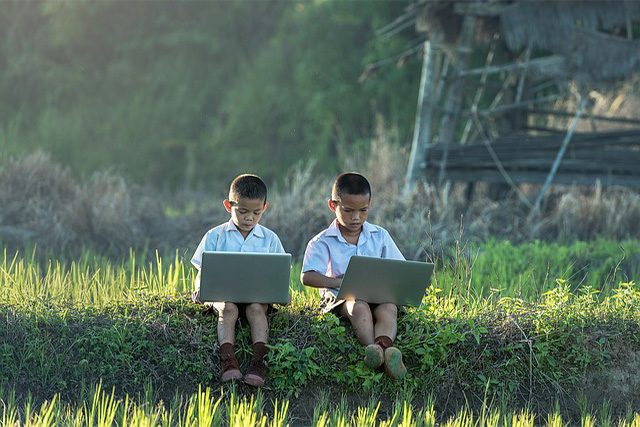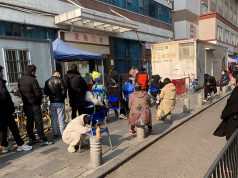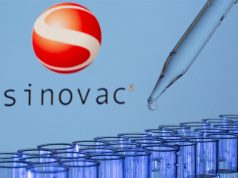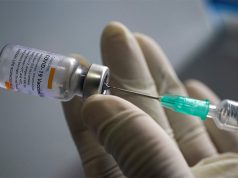As COVID-19 continues to force many schools to operate remotely, cities throughout the nation are stepping up to provide free internet service to public school students from families of lesser means.
Washington, D.C., plans to provide free internet access to K-12 students in 25,000 low-income households for the 2020-2021 school year. In Philadelphia, any family with a public school student lacking internet service can get it free through June of 2022. In Chicago, a similar effort will provide free high-speed internet service to 100,000 public school students over the next four years.
Since research consistently shows that students with internet access tend to do better academically than those without, the initiatives in Washington, Philadelphia and Chicago represent a welcome step toward closing the digital divide. However, if the free internet service lasts only as long as the COVID-19 pandemic, the digital divide may open back up before it even really begins to close.
I make this observation as a researcher who specializes in curriculum design and integrating technology into education.
A long-standing problem
The digital divide has been undermining the academic success of students from poor families since well before the pandemic led many schools to move their operations online. President Bill Clinton, for instance, spoke of the need to close the digital divide in his 2000 State of the Union address. The pandemic has underscored this issue in a much more visible way.
Digital equity advocates pointed out when the pandemic began in early 2020 that it had created a homework gap between students with internet service at home and those without. Many low-income parents expressed similar concerns. Research has shown that as many as 1 in 5 teenage students frequently miss homework assignments because of a lack of technology or internet access.
But the homework gap was hardly surprising. Federal data show that students who used computers or had internet at home consistently showed higher achievement scores in reading, math and science.
It also makes a difference in rates of high school graduation – an essential step on the way to college. For instance, when the Coachella Valley Unified School District – the second-poorest school district in California – launched a “WiFi on Wheels” initiative in 2014 that involved free Wi-Fi on school buses located in the community, it helped boost the graduation rate from 70% to 80% within two years.
Given what was known before the pandemic about the benefits of providing internet access to families that need it, it is reasonable to ask why it took this crisis to spur some cities to finally take steps to close the digital divide.
The lack of large-scale initiatives also suggests that the free internet may go away once the pandemic passes.
Reasonable costs
How hard would it be to provide free internet on an ongoing basis? A look at the Washington and Chicago initiatives suggests that it would cost about US$130 or so per household per school year.
Consider, for instance, Washington’s Internet for All initiative. The initiative seeks to provide free at-home internet access to 25,000 households with K-12 students at a cost of $3.3 million for the 2020-2021 school year. That breaks down to $132 per household for the period in question.
But it’s uncertain whether the initiative will last beyond the current school year. The Washington Post has reported that the city is using money it got from a federal pandemic response fund to cover one year’s worth of internet bills for each family, and that city leaders “hope to find more funds to continue the program beyond a year.”
The capital city’s initiative, which is part of a broader initiative called Tech Together, also involves the business sector, which can in turn potentially play a role in closing the digital divide. For instance, businesses that obtain broadband connections through initiatives like Washington’s Tech Together can then provide free Wi-Fi spaces for the public, including students. This helps to create a neighborhood web of connectivity that makes it possible for students to study without being confined to their homes, where conditions may not be optimal for studying. For instance, there might be numerous family members that must share the same devices or connection at home. The public Wi-Fi hubs would be of particular assistance to high school students.
The Chicago initiative – known as “Chicago Connected” – costs about the same as the one in Washington. The program, with a price tag of $50 million, is expected to serve 100,000 students in Chicago over the next four years. That breaks down to $500 per student over those four years, or $125 per year.
Chicago Chief Financial Officer Jennie Bennett said she hopes the program will lead to a “permanent infrastructure” – rather than a “temporary scaffolding” – to address the needs of the city’s students.
The scale of this $50 million program was made possible by substantial funds provided by some notable individuals and organizations, such as billionaire Ken Griffin, the MacArthur Foundation and former President Barack and Michelle Obama.
Internet and devices are not enough
There might be a tendency to view resolution of the digital divide as merely providing devices or free internet service. The initiative in Philadelphia – PHLConnectEd – doesn’t rest on this assumption. Instead, it seeks to address a hidden dimension of the divide, which involves how people use the internet, and why.
With those things in mind, Philadelphia’s program employs “digital navigators” to help individuals with a variety of tasks – from applying for free internet service to providing digital literacy training.
Ultimately, initiatives such as the ones in Washington, Philadelphia and Chicago will make a lasting difference if they do not end up being merely temporary ways to cope with the pandemic but remain as part of a long-term strategy to make basic educational opportunities available for all.![]()
D. Antonio Cantù, Associate Dean and Director of Education, Counseling and Leadership, Bradley University. This article is republished from The Conversation under a Creative Commons license. Read the original article.










